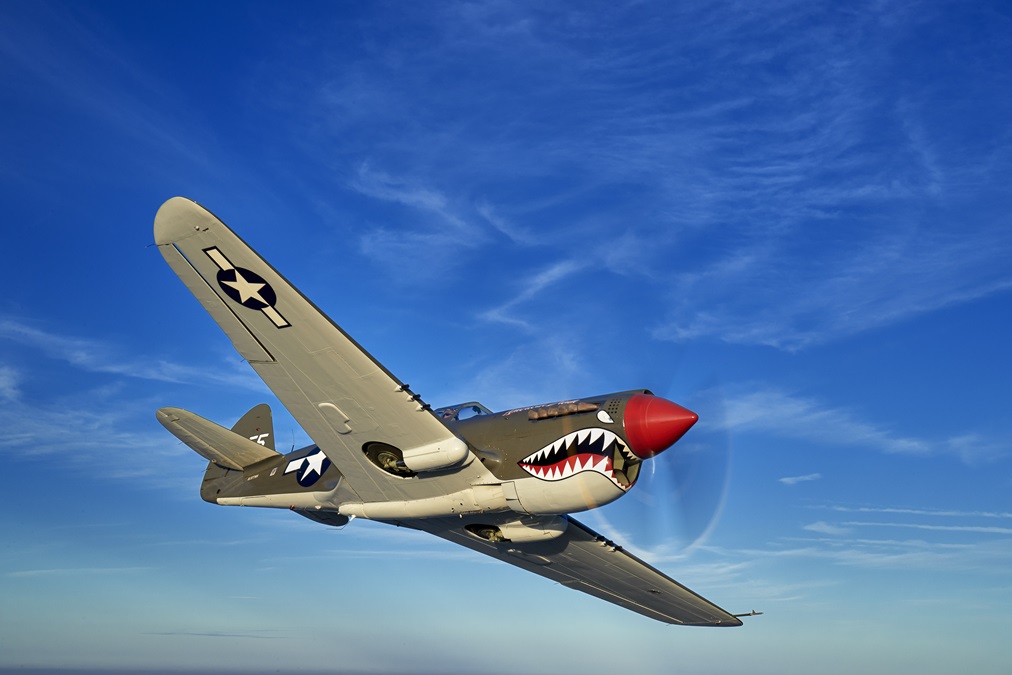How the Shark Got Its Mouth: The Story of the P-40 Warhawk
On October 15th, 1938, a significant milestone in aviation history was marked as Curtiss test pilot Edward Elliott took to the skies in the prototype Curtiss XP-40. Little did anyone know that this maiden flight would set the stage for the birth of an iconic aircraft known as the P-40 Warhawk. The XP-40 was a remarkable aircraft, powered by the newly installed liquid-cooled, supercharged Allison V-1710 V-12 engine. However, its initial design faced a critical issue that needed resolution – its speed.
The original design of the XP-40 placed the glycol coolant radiator in an underbelly position, just aft of the wing’s trailing edge. This placement proved to be less than ideal, as subsequent test flights by USAAC Fighter Projects Officer Lieutenant Benjamin S. Kelsey revealed a top speed of only 315 miles per hour. Speed was of utmost importance for this new fighter, and Curtiss engineers were determined to improve it.
To enhance the XP-40’s speed, Curtiss engineers began a series of modifications, moving the radiator forward in incremental steps. However, these adjustments yielded only marginal gains in speed. In their quest for a solution, Lieutenant Kelsey ordered the aircraft to undergo evaluation in a NACA (National Advisory Committee for Aeronautics) wind tunnel to identify ways to enhance its aerodynamic qualities.
After extensive research and analysis based on the data obtained from the wind tunnel tests, Curtiss made a crucial decision. They relocated the glycol coolant radiator to the aircraft’s chin, a revolutionary move in aircraft design. This new position not only improved the aircraft’s aerodynamics but also provided an air scoop for the oil cooler intake. As a result, the XP-40’s speed soared to in excess of 366 miles per hour.
This unique forward placement of the radiator and the large intake area created the perfect canvas for what would become the iconic Sharks Mouth paint scheme. The P-40’s distinctive appearance with its gaping “shark mouth” became an indelible symbol of the aircraft’s fierce prowess.
The P-40 Warhawk, known for its strength, firepower, and high-speed dive capabilities, found its most famous home with the Flying Tigers, officially known as the 1st American Volunteer Group (AVG) of the Chinese Air Force. Comprising American pilots who flew under civilian status with P-40Bs bearing Chinese markings and the renowned Tiger mouth artwork, the Flying Tigers became legendary in World War II aviation history.
The Flying Tigers consisted of several squadrons, including the “Adam & Eves,” the “Panda Bears,” and the “Hell’s Angels.” The P-40B Warhawk proved its mettle in combat by excelling in several areas. It was rugged, well-armed, and faster in a dive, making it a formidable adversary. While it couldn’t match the Japanese Army air arm’s maneuverability in slow-speed turning dogfights, the P-40s more than made up for it at higher speeds.
Under the leadership of Claire Chennault, the Flying Tigers were trained to exploit the P-40’s specific performance characteristics. With a higher dive speed than any Japanese fighter aircraft of the time, the AVG pilots employed “boom-and-zoom” tactics. Their successes in combat were so remarkable that they were widely publicized, providing a much-needed boost to sagging public morale back home.
According to official records, in just 6 1/2 months, the Flying Tigers achieved an astonishing feat, destroying 115 enemy aircraft while losing only four of their own in air-to-air combat. Their legacy lives on not only in the history books but also in the enduring image of the P-40 Warhawk with its iconic shark mouth, a symbol of courage and determination in the face of adversity.
Hits: 3









